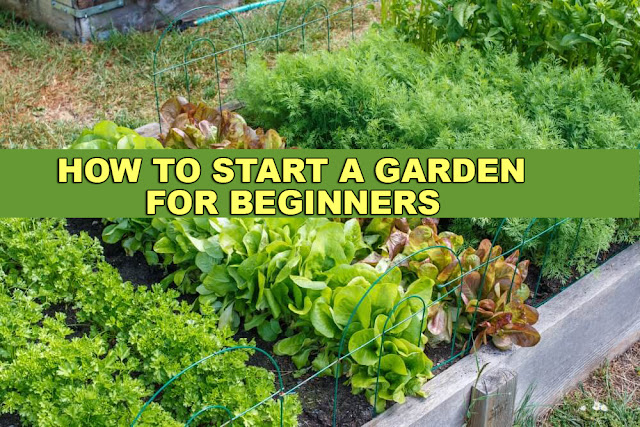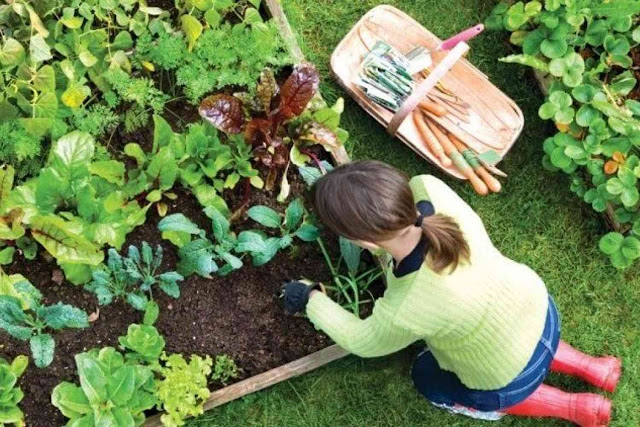Gardening for Beginners
To start gardening, you need a little bit of land, a good dose of motivation, some basics and a little specific vocabulary to better understand the jargon of gardeners. We will give you the keys to start without making too many mistakes.The gardener's vocabulary
When you hear the gardeners talk about perennials, annual plants, you will now know what they are referring to. Perennials are the plants that remain in place in the garden for several years or even decades. Generally appreciated for their foliage as well as for their flowering, perennials once installed require little maintenance. They are planted in the fall, sometimes in the spring (but then they will have to be watered all summer). Example: sedum, priming, acanthus, aching...
Unlike perennials, annuals are plants that live only during the beautiful season and must be reseeded every year. For example, capuchin, cosmos, poppy, are annual flowers. Biennials are distinguished from annuals by the fact that they only bloom the year after sowing. Finally, when you hear about hardy plants, you will now know that this means that the plant is resistant to the cold. Persistent foliage is those that do not fall during the winter, unlike deciduous foliage.
A rising plant has the distinction of flowering or growing twice a year, once in the spring and once in the fall. For example, you'll find rose bushes, strawberries, etc. Other important concepts, those concerning how to multiply plants! Apart from sowing, new plants can be obtained from an original plant, through various practices. Cutting involves removing a stem and developing roots by placing it in water, sand or wet soil. The division is the taking of a new plant from a mother strain.
The essential tools
Courtyard or flower terraceIf you have a flowery yard or a terrace decorated with potted plants, you won't need many accessories: gloves (preferably gloves designed to withstand the thorns of roses), a small shovel, a pruner and a shear for the pruning.
Small gardens grassed and flowered
Once a garden is grassed, it is necessary to acquire a lawnmower: electric or propane motor, or even manual mower for very small areas. When the mowing surface is really tiny, it is possible to acquire a good quality trimmer and use it for finishing as well as mowing the lawn.
For a small garden planted with shrubs and perennials, the spade fork is also essential. It will be used to return the land to prepare seedlings but also to dig the soil to make your plantations. If you have to choose between buying a spade or buying a spade fork, prefer the spade fork which is versatile.
If you don't tolerate dead leaves in your garden, you'll also need a rake. Note that some mowers pick up the leaves... Finally, last purchase, reserved for those who maintain their garden a lot: plastic gardening clogs, to be able to walk in the wet soil, work in the vegetable garden and spade without inconvenience!
Medium and large gardens
In good-sized gardens, it is essential to have a wheelbarrow, so that you can transport green waste, tools, etc. From 1500 m2 of lawn to mow, the self-wearing mower also becomes necessary. An expensive investment that must be taken into account when dreaming of large spaces... To ensure watering in the summer, a rainwater collector will quickly become useful. Finally, equipping yourself with a composter will not be a luxury and will allow you to eliminate some green waste and at the same time improve the quality of your land by obtaining a beautiful compost.
What you need to know to get started!
Soil preparation is an essential step that will allow you to succeed in your plantings and seedlings. Know that poor preparation will ruin your efforts, so don't save money on this step. Preparing the soil, softening it, is about turning a compact earth into soft, airy soil. The spade fork will allow you to work the ground in this way. When you plant or sow, the soil must be weeded to allow the proper development of your seeds, plant, shrub or tree. Watering freshly settled seedlings and seedlings is essential. A plant that has been sold to you with bare roots, i.e. without soil around, must be praline before planting, i.e. you will dip the roots in a mixture of soil and water.
Planting is usually done in the fall, while most plantings are done in the spring. Seedlings can be tricky to succeed, buying plants in the form of a young bucket plant can be a good solution for the beginner gardener. Finally, remember that success also depends on the ability of your plants to adapt to your land and climate. So if in doubt, look at the gardens in your neighbourhood, interview your neighbors, and you will soon have an idea of the plants that will flourish in your home!





